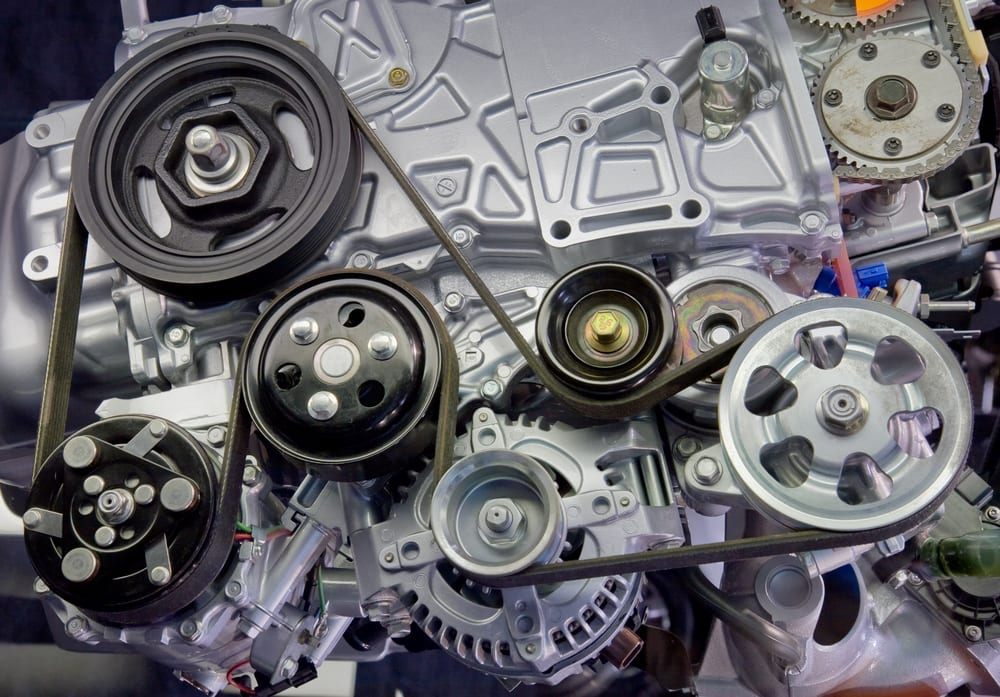While you can’t always avoid automobile emergencies, a preventive maintenance schedule will give you the best chance to keep your machine’s engine running smoothly. The engine comprises several components that help it perform optimally, and when even one component fails, your car’s performance may be impacted. Keep this guide in mind as you tend to all your car’s belts, which play a key role in helping your engine run well.
Drive Belts
The drive belts help your car run efficiently. Just like the name implies, a drive belt is a loop of flexible material that transmits power to different parts of the engine. Most modern cars have between one and three drive belts: timing belts, V-belts, and serpentine belts.
Timing Belt
This belt connects the crankshaft to the camshaft and plays a key role in the operation of internal combustion engines. The timing belt synchronizes the rotations of the crankshaft and camshaft, helping the car’s valves and pistons function correctly. When the timing belt works as intended, the valves control air and fuel mixture intake in addition to pushing pistons down as fuel ignites.
How often you should change timing belts depends on the make and model of your car. Some manufacturers suggest replacing these every 30,000 miles, while others advise less frequent switches at 120,000 miles. If you hear a high-pitched squeaking or squealing noise when you drive, the timing belt might be the culprit. Additionally, a ticking noise or an engine that will not ignite may have a problem with the timing belt.
V-Belt
This drive chain operates with a crank and pulley system. Older vehicles may have several V-belts, while more modern cars might not have any. A V-belt transmits power or torque from the driving component to another part of the engine. The pulley system helps grip the roller components, which decreases the risk of slippage and makes system output more effectual.
Serpentine Belt
The serpentine belt is a long rubber belt along the car’s engine that provides power to vehicle components like the power steering pump, the alternator, and the air conditioning. When the car is running, the serpentine belt works constantly to transfer power from the engine to multiple systems. Most cars built after 1990 have a serpentine belt rather than a drive belt, as it is easier to remove and replace.
How Often Should I Replace Belts?
Most manufacturers recommend replacing belts every 60,000 to 100,000 miles. However, take your car to a mechanic if you notice issues like a squealing noise, a faulty air conditioner, an overheating engine, or power steering that doesn’t work. If you can see visible cracks or tears in your serpentine belt, it’s time for a replacement. If your belts continue to be used as they wear out, they will eventually crack or turn glazed. They might also become soiled by fluid and could eventually snap, which would affect drive torque to all the engine’s mechanisms.
Basic Belt Maintenance Tips
To help belts last, refer to your owner’s manual or a trusted mechanic for best practices for your car’s make and model. First, you can familiarize yourself with the location of your belts, waiting until your engine is cool to visually identify them under the hood. Many modern cars have belts at the front of the engine. Next, be sure that you or your mechanic inspects the belts with each oil change. This allows damage to be identified early so you can replace belts before damage affects vehicle performance. Make sure that pulleys are properly aligned, as the car will not run as easily if belts are slipping off the pulley.
Your car has tensioners to regulate how much pressure is placed on the belt to keep it on the pulley. A loose tensioner can cause a timing belt to slip off the pulley, causing some components to lose power. Anytime you check your belts, check your tensioners, too. While there are no strict rules for belt replacement, many mechanics recommend a general rule of thumb that more than three cracks in a 1-inch space on the belt call for a replacement.
Can I Change Belts Myself?
If you diagnose a damaged belt, you might consider replacing it yourself; the procedure is fairly simple. First, wait until the car is off and the engine is cool. Check the belt routing diagram, usually found in your owner’s manual or under the hood. If you can’t find it, YouTube or Google is a good place to check. Release the belt tensioner with a wrench or special belt tool, then remove the belt from the pulley. Make sure the pulley spins freely.
Compare your new belt to the old to ensure it is the correct size. Use your routing diagram to install the new belt, placing the grooved side of the belt against the pulleys’ grooved side. Compress the tensioner to tighten the belt, then pull the belt tight to check tension. If it stretches more than one inch, tighten it further.
Before you turn on the car, perform a final check to be sure the belt is routed properly, is straight on the pulleys, and has appropriate tension. Finally, start the car with the hood open, watching to see if the belt is rotating properly on the pulleys.
For belts you cannot see or reach, take your car to a trusted mechanic when you need a replacement.
